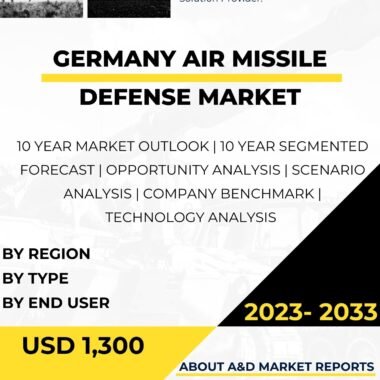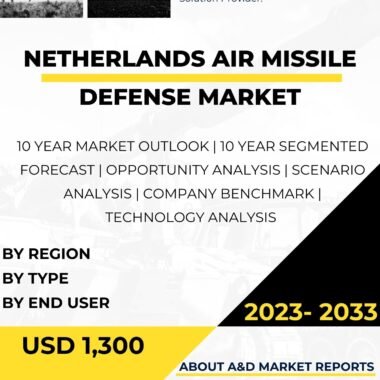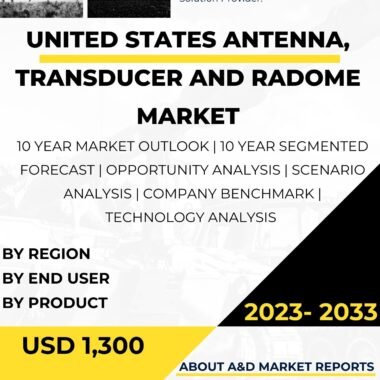Description
The Radar market in Malaysia has experienced significant growth and development in recent years, reflecting the country’s commitment to enhancing its defense capabilities and bolstering its surveillance and situational awareness capabilities. Radar technology plays a crucial role in various sectors, including defense, aviation, maritime, and meteorology. The adoption of advanced radar systems enables Malaysia to establish a robust and modern radar infrastructure, contributing to the country’s overall security and safety.
As a nation with strategic geopolitical importance in Southeast Asia, Malaysia faces diverse security challenges, including potential threats from hostile forces, piracy, smuggling, and natural disasters. The integration of advanced radar systems into its defense and civil infrastructure enables the country to monitor its airspace, maritime domain, and land borders effectively, enhancing its ability to detect and respond to potential threats and emergencies.
The Radar market in Malaysia has witnessed significant technological advancements. Modern radar systems are equipped with cutting-edge technologies, such as Active Electronically Scanned Array (AESA) and Synthetic Aperture Radar (SAR), which provide enhanced detection capabilities and improved target tracking. These advancements have expanded the operational range, resolution, and accuracy of radar systems, making them more reliable and effective in challenging environments.
Moreover, radar systems are essential for air traffic management and aviation safety. Civil aviation authorities use radar to monitor and control air traffic, ensuring safe and efficient airspace operations. The integration of radar systems into Malaysia’s aviation infrastructure enhances air traffic surveillance, contributes to seamless air traffic management, and reduces the risk of collisions and airspace congestion.
Additionally, radar technology is crucial for maritime surveillance and border security. Malaysia’s extensive coastline and maritime territory necessitate robust maritime surveillance capabilities to monitor vessel traffic, detect illegal activities, and protect its territorial waters. Radar systems, such as coastal surveillance radars and shipborne radars, enable the Malaysian Maritime Enforcement Agency (MMEA) and the Royal Malaysian Navy (RMN) to maintain a vigilant maritime presence and respond to maritime threats promptly.
Furthermore, radar technology plays a vital role in meteorology and weather forecasting. Weather radars provide valuable information on precipitation patterns, severe weather events, and atmospheric conditions. The Malaysian Meteorological Department (MET Malaysia) utilizes radar data to issue timely weather advisories and warnings, helping to safeguard lives and property during extreme weather events.
The Malaysian government has recognized the importance of international collaborations in acquiring and developing radar technologies. Partnerships with leading global defense companies and radar manufacturers have facilitated access to cutting-edge radar systems and expertise. These collaborations have enabled technology transfer and capacity building, contributing to the growth of Malaysia’s domestic radar capabilities.
Furthermore, Malaysia has been actively investing in local research and development (R&D) initiatives to foster indigenous radar technologies. By encouraging homegrown innovation, Malaysia aims to achieve self-reliance in radar development and strengthen its defense industrial base.
While the Radar market in Malaysia shows promise, it is not without challenges. One of the primary hurdles is the high cost of developing and acquiring advanced radar systems. These sophisticated technologies require significant investment in research, development, and testing. Budget constraints may impact the pace and scale of radar acquisition and modernization efforts.
Moreover, radar systems require skilled operators and specialized training to utilize them effectively. The Malaysian Armed Forces and other agencies must invest in continuous training and education to ensure their personnel possess the necessary expertise to operate and maintain these complex systems.
Additionally, the implementation of radar systems requires suitable infrastructure and support facilities. Establishing and maintaining radar stations and networks involve coordination with various agencies and considerations of environmental factors.
Looking ahead, the Radar market in Malaysia is poised for further growth. The government’s commitment to modernizing its defense capabilities and enhancing its surveillance and safety infrastructure will drive continued investments in radar systems. As radar technologies continue to evolve and demonstrate their effectiveness, they are likely to play an increasingly pivotal role in Malaysia’s defense, security, and civil applications.
Moreover, Malaysia’s participation in regional security collaborations and joint radar surveillance initiatives will likely influence its radar requirements. As the country seeks to strengthen its position as a key player in regional security and defense cooperation, the demand for advanced radar systems with interoperability and compatibility with allied forces will increase.
In conclusion, the Radar market in Malaysia has experienced significant growth and progress. The government’s focus on enhancing its defense capabilities, civil infrastructure, and investing in advanced radar technologies has paved the way for the integration of modern radar systems into its national security and safety initiatives. International collaborations and domestic research efforts have positioned Malaysia as a participant in the global radar technology landscape.
However, challenges related to budget constraints, technology development, training, infrastructure, and engineering expertise must be addressed proactively to sustain and enhance the growth of the radar market in the years to come. By maintaining a modern and capable radar infrastructure, Malaysia can effectively enhance its defense and security capabilities, protect its territorial integrity, and improve its overall surveillance and situational awareness.




